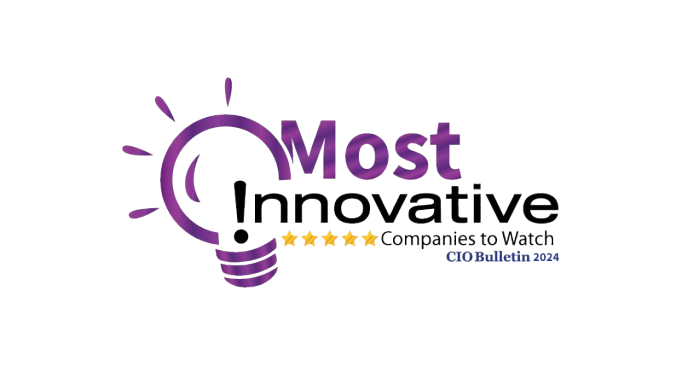Salesforce To HubSpot Migration
September 18, 2022
To thrive in the market you operate in, it is always essential to stay up-to-date and in sync with the latest tech trends. HubSpot provides you with a set of modern CRM tools and features for handling your business records and providing better services to your customers.
This makes many businesses migrate from Salesforce to HubSpot. Moving to HubSpot provides you with CRM solutions that are cheaper and more efficient, making data management holistic for your organization.
Why Do Businesses Migrate From Salesforce To HubSpot?
Here are some of the primary reasons why businesses choose to move from Salesforce to HubSpot:
Cost-effective CRM Solutions
The cheapest Salesforce CRM edition starts at $25/user/month with a limited free trial. Unfortunately, this often dissuades SMEs and solo entrepreneurs from continuing with Salesforce, prompting them to move on to a more cost-effective solution.
HubSpot provides users with a freemium model where the basic edition is free for everyone. HubSpot helps you save a fortune that would otherwise have been spent on expensive tools and features without compromising the quality of CRM solutions obtained.
Carrying Out Faster Processes
HubSpot is arguably the most preferred CRM solution in the market regarding process automation. The seamless automation tools offered by the platform substantially increase the speed of your business processes across the board. From managing leads to building inbound marketing campaigns, HubSpot helps you carry out various methods faster.
Operating at a faster speed increases the overall productivity of your organization, helping you reach your business goals quicker.
Centralized Platform For Marketing, Sales, And Customer Service Teams
HubSpot prevents you from switching to different products for your marketing, sales, and customer service processes. Instead, it lets you combine all these activities on a centralized platform. This provides users working in different departments with a comprehensive view of your contacts and deals. In addition, HubSpot ensures everyone is on the same page and helps you organize your business processes across various departments.
Explore A Wide Range Of Integrations
One of the critical reasons businesses migrate to HubSpot has always been the integrations offered by the platform. HubSpot allows you to integrate with many third-party applications based on your needs and preferences. In addition, HubSpot integrations will enable you to extend the functionality of the CRM platform by clubbing it with an ideal application or service.
Steps Involved In Migrating From Salesforce To HubSpot
While moving from Salesforce to HubSpot is not too complicated, it is essential to be precise and careful while making the switch. Especially when moving your records from one platform to another, you cannot afford to commit errors as it may hamper the data you would work on after migrating to HubSpot.
Here are the steps involved in migrating from Salesforce to HubSpot:
Clean Your Data
Always start by cleaning up your data. CRM platforms are all about seamless data management; you cannot mess up the most crucial aspect of migration. Scan through your entire Salesforce database and look for duplicated, irrelevant, or incorrect records. Remove these records to have a clean database at your disposal.
Moving with a clean and up-to-date database would make it easier for you to work on HubSpot after migration.
Keep Your Records Logically Ordered
Once you have cleaned your data, it is advisable to have your records logically ordered. This is when you organize your records and create rules for your team regarding handling your data. This will help you keep your records ordered and systematic. For example, businesses often use sales targets to ensure that all their leads, contacts, and accounts are categorized by location.
Make Provisions For Data Backup
The last thing you would want while migrating from Salesforce to HubSpot is to lose your data. While most migrations are secure and help you back your data up, it is advisable to use data backup tools to prevent losing your valuable records. Go ahead with the migration only when you have a good data backup and have your records protected.
Move Your Data
After making all necessary arrangements, you can start moving your data from Salesforce to HubSpot in a systematic manner. Make sure you schedule the migration, so your ongoing business processes are not affected. Also, plan the migration when your team members are not required to use any of the two CRM platforms for performing essential tasks.
This is where you move and recreate your data to build your HubSpot database. Then, using your data, you can start creating workflows, emails, campaigns, and landing pages.
Configure Your CRM
Once you have moved your data from Salesforce to HubSpot, you may need to configure a few important elements based on your needs and preferences. This will help you create a solid foundation for your new HubSpot account.
Launch Your First Campaign
Once everything is set, and you are ready with a new database in action, you can go ahead with creating your first HubSpot campaign. Make sure you take help from your HubSpot implementation partner during the first few days to make your team members comfortable with the new platform.
How Does Migration From Salesforce To HubSpot Look Like?
Now that you have an overview of the steps in migrating your data from Salesforce to HubSpot, we can dive a little deeper and see what the migration looks like for different CRM aspects.
Here are the significant steps to be followed for migrating your records, integrations, automation, and reports from Salesforce to HubSpot:
Records
Start by defining the datasets (accounts, leads, contacts, opportunities, etc.) that need to be moved from Salesforce to HubSpot.
Build new and relevant HubSpot properties.
Export your records from Salesforce to HubSpot using clean .csv files.
Integrations
Start by redefining your technical architecture and consolidating your records wherever possible.
Connect all the essential business apps using one of the 500+ connectors offered by HubSpot.
If you cannot find a pre-built integration, you can use HubSpot’s API library for building your integrations.
Automation
Start by documenting automation and workflows.
Go ahead with rethinking, optimizing, and simplifying the automation design to be set up in HubSpot.
Finish by re-building your automation and workflows using the Workflow Tool offered by HubSpot.
Reports
Start by inventorying all your active reports in the existing tool.
Now, define the future reporting needs post-migration and consolidate your reports wherever possible.
Finally, select suitable out-of-the-box reports that suit your business needs and requirements. You can modify these reports if there is a need to do so. Moreover, you can now build custom reports to fill any significant gaps after migrating to HubSpot.
The Final Word
You should consider these essential aspects while migrating from Salesforce to HubSpot. While the migration process is relatively straightforward, it must be performed precisely. Make sure you take help from your implementation partner as you move your valuable datasets from one CRM platform to another.
Featured Resources
Check Our Latest Resources

Proven ROI has been recognized as one of the Most Innovative Companies to Watch 2024 by CIO Bulletin—a testament to the company’s forward-thinking approach to CRM investments and strategic partnerships. By working closely with leading CRM platforms like HubSpot, Proven ROI is revolutionizing how businesses manage customer relationships, scale their operations, and drive growth.



